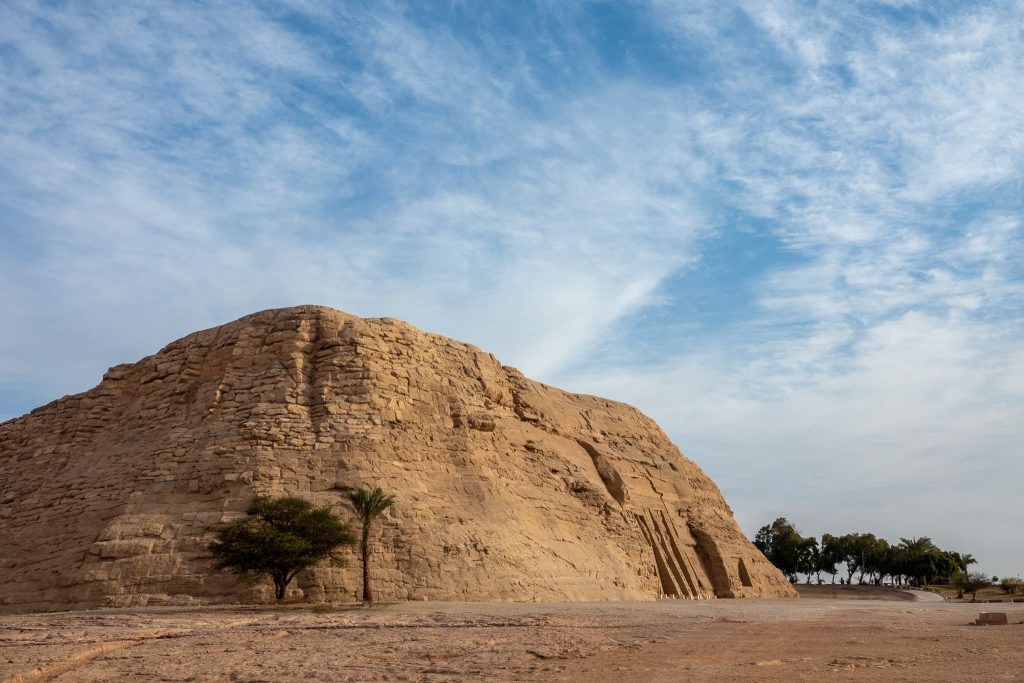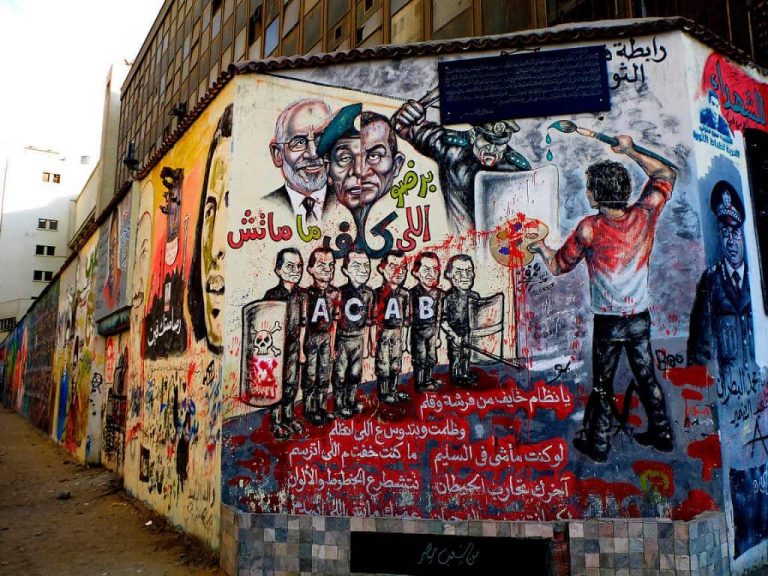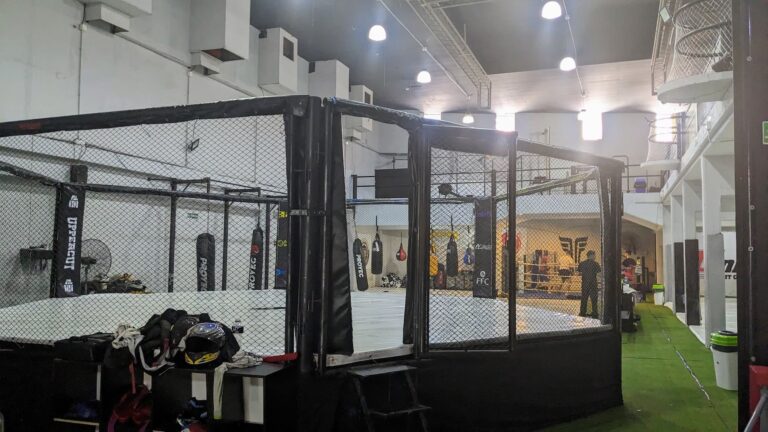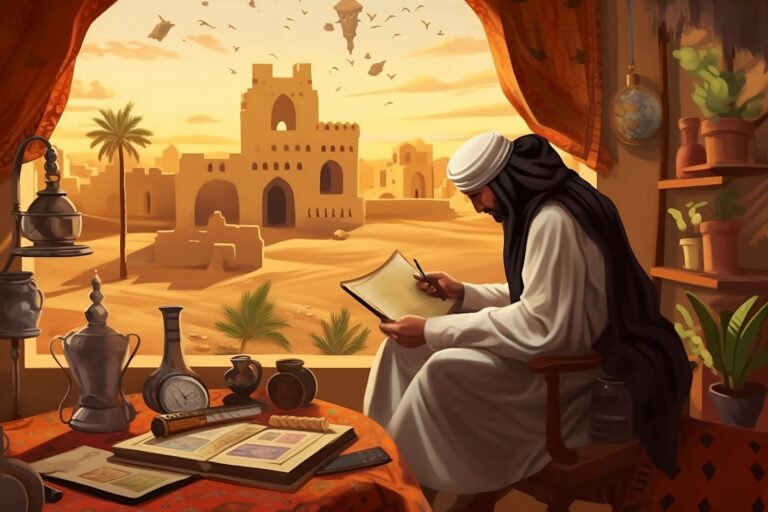Egyptian Arabic Place Names and Monument Names: A Comprehensive List
If you’re visiting Egypt, it’s very helpful to know Egyptian Arabic place names and monumnet names.
When travelling in Egypt, then it’s very useful to know the Egyptian Arabic place names. And if you’re learning Egyptian Arabic, then you have to learn to talk about the monuments in Arabic.
An oft-quoted statistic is that Egypt contains one third of the world’s monuments.
The definition of ‘monument’ is probably up for debate. But there’s definitely a lot of stuff to see: tombs, pyramids, mosques, temples and more.
Unfortunately, since most online guides you find with Google are in English only, it’s hard to find all the right words. So we created this guide for all the words for Egyptian monuments in Arabic.

Contents
Why learn Egyptian Arabic place names and monument names
There are a couple of good reasons to learn the names of Egyptian monuments in Arabic.
Firstly, it’s good for general conversation. When talking to anyone, they’ll often ask “Have you seen the monuments?”
If the answer isn’t yes, you’re in trouble. (Never mind the large percentage of Egyptians who haven’t actually visited the Pyramids from up close.)
The second reason is when you’re talking to taxi drivers. If you don’t know the name of the place you’re going to, you’re just going to go in a random direction for a while.
Culture tip: Taxi drivers want directions going from big to small. The region, then the major roads, then the exact street and number. So you need to know the names of major parts of cities: downtown, Zamalek, the island and so on.
So even though words like “tomb” and “Pyramid” are definitely absent on our 80-20 word list for language learning, they’re critical in Egypt.
Sometimes it’s to tell people where you’ve visited and where you haven’t (and what you thought of them).
But we never learned the Egyptian Arabic names for monuments from books or courses we’re sharing them here.
Names of Egyptian Monuments in Arabic
You need to know words like “statue”, “temple” and “mosque” in Arabic (and Egyptian pronunciation, even though they’re mostly MSA words).
Monument names are some of the most important Egyptian Arabic place names.
If you don’t know words like these, then a guide by a taxi through an area will sound like “The blah region has four hundred blahs in the blah, and one of the biggest blahs in the world.” Fascinating stuff, but we need more detail, please.
- Monuments: asaar (اثار). This is the word used to describe anything old — temples, statues, tombs, mosques, and pyramids.
- Statue(s): timsael/tamasiil (تمثال\تمثيل). There are statues of many things, mostly gods and pharaohs.
- Pharaoh: far3oon/faraa3nah (فرعون\فراعنه). Usually guides will mention the names of Pharaohs by name as if you’re just supposed to know.
- Drawing/painting: rasoom/rasoomaat (رسوم\رسومات). They’re all nice.
- Temple(s): ma3bad/ma3aabid (معبد\معابد).
- Mosque(s): masgid/masaegid (مسجد\مساجد). Also known as gaemi3 (جامع\جامعين) for the larger ones
- Church: Kineesa (كـنيسـة). These are in the minority.
- Garden: Hadiiqa (حديقة). The formal MSA word is used for the bigger ones, like the al-asaar garden.
- Tower: burg (برج). There’s really just one, and it’s missable.
- Obelisk: musala (مسلة). The best one is the one they never built, the Unfinished Obelisk, al-musaala al-naaqiSa.
- Gate: baab (باب). Literally “door”. There are baabs all over Cairo.
- Market: su’ (سوق). You might know the word souk, which is the same word. The last letter qaff is pronounced as a glottal stop in Egyptian Arabic.
- Tomb(s): maqbara/maqaabir (مقبرة\مقابر).
- Pyramid: haram (هرم). The Pyramids are al-ahramaat.
- Mummy: mumiyaa’ (مومياء). The English word was originally Arabic, coming via Latin (mumia).
Egypt Site names in Egyptian Arabic
Site names are also some very important Egyptian Arabic place names.

You need to know the names of sites in Egypt to say “I’ve seen the xyz” and stop people bugging you (however, persistent tour operators will never stop bugging you).
We’ll divide this up into: tourist sites, major areas in Egypt and places in Cairo.
Tourist sites in Egypt
Egyptian Arabic place names in Cairo, Giza and Surrounds
- The Pyramids (of Giza) a.k.a. The Giza Necropolis: al ahramaat (الااهرمات). If you don’t know what these are, Google it!
- The Sphinx: abu el-holl (ابو الهول). Literally means “the father of terror”.
- Saqqara:
- The Pyramid of Djoser
- The Nile: nahr an-niil (نهر النيل). Walk along the corniche, which is described with the same word in Arabic.
- The Egyptian Museum: (). Where you can see all the relics from Tutankhamun’s time.
- The Citadel: al-‘al3a (القعلة). One of the hardest words to pronounce, in my opinion!
- Khal al-khaliili: khan al-khaliili. (خان الخليلي). This is a market that’s worth a look, but don’t buy anything there other than food and coffee… the goods are mostly made in China.
- Al-Azhar Mosque: al-gaami3 al-azhar (الجامع الازهر). Note they use the word gaami3 instead of masgid for most mosques.
- Al-Azhar Park: Hadiiqit al-azhar (حديقة الازهر). The MSA word for garden is used to describe this park.
- The Mosque of Muhammad Ali: gaami3 moHammad 3alii (جامع محمد علي). Note it’s not called a masgid like most mosques.
- Islamic Cairo: al-qaahira al-faTmiyya (القاهرة الفطمية). Spend an early morning here walking around. It’s quietest on Friday mornings, but also, most places to eat are closed until after noon prayers.
- Old Cairo: al-qaahira al-qadiima ().
- Coptic Cairo: al-qaahira al ‘ibTiyya ().
- Cairo Tower: burg al-qaahira (برج القاهرة). Don’t go there (it’s a waste of time and money), but it’s a landmark you can see from many places.
Upper Egypt place names in Egyptian Arabic
“Upper Egypt” is the area below Cairo. I don’t know why it’s called this in English. It should be Lower Egypt, or just Sa’iid. Anyway on to names of things:
- Upper Egypt: aS-Sa3iid (الصعيد). Also known as Sa3iid maSr. People here are known as Sa3iidi.
- The Unfinished Obelisk: al-musala an-naaqiSa (المسلة الناقصة). It would have been the largest in the world if it were ever erected, but it wasn’t for some reason (some say because of the huge crack in the rock, but others say that came later).
- Abu Simbel: abu simbel (أبو سمبل). The name of the village near which you’ll find the two temples.
- The Valley of the Kings: waadi el-mlook (وادى الملوك). Probably the coolest sounding place in all of Egypt, and the most impressive collection of tombs and catacombs you’ll find.
- The Temple of Karnak: ma3abad al-karnak (معبد الكرنك). The word karnak comes from an Arabic word that means “fortified village”, something people assumed the area was (it isn’t).
Sinai Peninsula site names in Egyptian Arabic
You might also want to visit the gorgeous Sinai Peninsula. If so, you should learn the Egyptian Arabic place names for everywhere in as-sinaa’.

Most of the Sinai Peninsula is off-limits due to the potential threat of tourism, if you listen to official state travel advisories. Don’t listen to them — the Sinai Peninsula is beautiful and worth it.
- Sinai: sinaa’ (سيناء)
- The Sinai Peninsula: shibh gaziirat sinaa’ (شبه جزيرة سيناء)
- Mount Sinai: gabal musaa’ (جَبَل مُوسَىٰ). An important mountain historically. You can do night hikes here to greet the sunrise, and see St Catherine’s Monastery and the Coloured Canyon the next day.
- The Coloured Canyon: al-waadi al-maloon (الوادي الملون). A beautiful canyon worth trekking through. Like Antelope Canyon but without the massive crowds.
- The Blue Hole: al-thuqb al-azra’ (الثقب الأزرق). A deep-water diving hole that is notorious for having claimed the lives of hundreds of experienced technical divers.
- St Catherine’s Monastery: al-‘addiisah kaatriin (القدّيسة كاترين). one of the oldest Christian monasteries in the world (about 1500 years old), with the oldest continuously operating library.
- Mount Catherine: gabal kaatriin (جبل كاثرين). Mount Catherine is the highest mountain in Egypt, and has a small Orthodox church on the summit.
- Ras Mohamed National Park: ras moHammed (راس محمد). Near Sharm el Sheikh, Egypt’s most well-known national park and a great diving spot.
Suburbs and Regions of Cairo in Arabic
It’s very helpful to know Egyptian Arabic place names for suburbs and regions of Cairo.
First, have a look at our neighbourhood guide to Cairo to figure out where to stay.
Once you’ve figured out what neighbourhood to stay in, you still need to know the names of other places
For one thing, when you’re giving directions to a taxi or Uber/Careem driver (yes, they still sometimes need directions… the apps are buggy in Egypt, don’t always indicate the best route, and reception is patchy at times for cheaper carriers used by some drivers), you always start with the suburb and then hone in on where you want to go.
- Downtown: wasT al-balad (وسط البلد): Every city has a ‘downtown’ area, usually informally designated.
- Zamalek: zamaalek (زمالك). The fanciest part of town, with hotels, embassies and home to many well-to-do families.
- Giza: al-giza (الجيزة)
- Gazira Island: al-gaziira (الجزيرة). The word gaziira (or jaziira in MSA) means “island” so they wouldn’t call it gaziirat gaziira, in case you were wondering.
- Heliopolis: maSr el-gadiida (مصر الجديدة). Literally “New Egypt”, easily confused with New Cairo (sometimes the word for Egypt is used to refer to Cairo). Heliopolis is where the presidential palace is, and is a nice place to hang out.
- Dokki: ad-do”i. (الدقي). The qaff is pronounced with a double glottal stop.
- Mohandesin: mohandesiin (مهندسين). Literally “Engineers”.
- Nasr City: madinat naSr (مدينة نصر). A very crowded part of the city, an extension to Cairo absorbed into the city.
- 6th of October City: sitta oktobir (ستة أكتوبر). An extension of Cairo also absorbed into the city.






